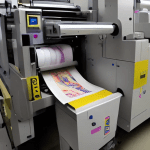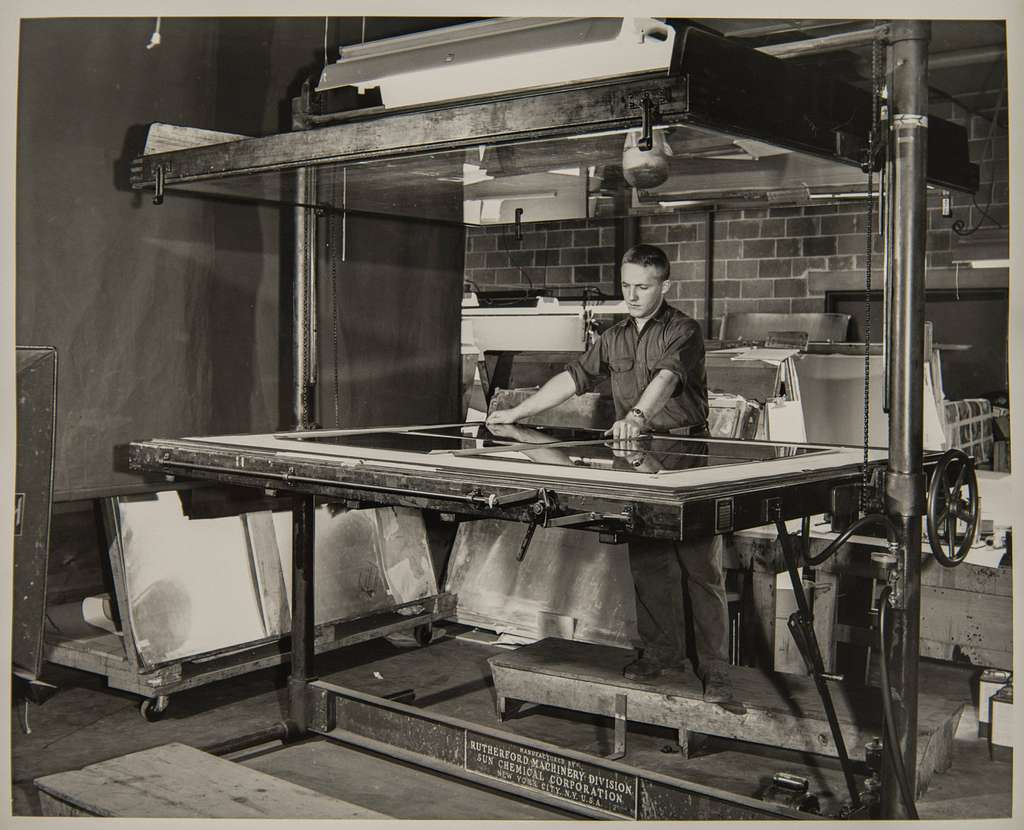This blog was written and submitted to us by Sandra Kaiser. Visit Flexo Consulting to know more.
This article is part of the FLEXO FLAW FIXING series
Interested in understanding the washboard effect in flexo printing and how to counter it effectively? Let’s delve deeper into this phenomenon and uncover practical solutions that can elevate your printing quality and visual appeal.
Unravelling the Washboard Effect
Picture your corrugated packaging resembling the streaks of a washboard, a less-than-ideal outcome in flexographic printing. Corrugated board comprises several layers of paper, with printing happening on the outermost web, the top web, and the fluted corrugated web directly underneath. This washboard effect results from direct printing on corrugated board, where the interplay between the printing plate and the corrugated surface creates uneven pressure distribution.
The inked printing plate is rolled directly against the corrugated board. If the screen dots hit the crests of the corrugations, there is greater counter-pressure than in the troughs of the corrugations. The screen dots are squeezed and print out partly elongated. This causes an increase in tonal value, which becomes visible in the form of stripes. The effect is intensified with corrugated board profiles with larger, coarser flute pitches. The use of thin liner paper also intensifies the effect.
This effect, often observed on items like pizza boxes and shipping packages, significantly impacts consumer perception and product aesthetics. The washboard effect is not pretty to say the least and as a consumer, poorly printed packaging has an impact on the content. Ergo, not very pretty packaging, rather not so good products.
Mitigating the Washboard Effect in Flexo Printing
There are several ways to optimise the contact of the flexo printing plate to the board.
Substrate Optimisation
Enhancing the substrate quality remains a fundamental strategy to combat the washboard effect, albeit at a cost. Optimal selection of cover material with the right gram weight, coupled with minimising corrugation size, enhances printability. Narrowing the gap between corrugation tips improves the quality of corrugated sheets.
Double flute corrugated boards strike a balance between print quality and packaging stability, with printing on the outer, finer flute, and relying on the underlying coarser flute for structural support, albeit at increased substrate expenses.
Printing Plate Selection
Choosing the right printing plate plays a pivotal role in mitigating the washboard effect. Opting for super-soft, thick flexographic printing photopolymer plates can reduce the washboard effect while maintaining good ink density. However, these plates are costly and challenging to handle during installation or mounting due to their weight.
Substructure Selection
A better solution here is the combination of a thin, harder printing plate in conjunction with a compressible foam substructure. The foam substructure absorbs the unevenness in the corrugated board, thus reducing the contact pressure on the printing plate in the printing nip. This results in less dot gain, finer halftone images and significantly higher print quality.
The foam substructures present high recovery capacity after leaving the printing nip, they are resistant to printing inks, and their low weight makes them much easier to handle in the press. The latest, innovative foam substructure can be positioned many times better in the press thanks to its non-woven surface. This makes work much easier for the printer.
Conclusion
By implementing these strategies – enhancing substrate quality and selecting the appropriate printing plate and substructure – you can effectively combat the washboard effect in flexographic printing. Elevating the visual appeal and print quality of your corrugated packaging not only enhances consumer perception but also underscores your commitment to excellence in printing.


![[Flexo Flaw Fixing] Vertical Streaks Longitudinal stripes in flexo printing](https://flexopedia.net/wp-content/uploads/2022/07/062_Longitude_Stripes-jpeg-e1703168839289.webp)

![[Flexo Flaw Fixing] Horizontal Streaks Transverse Stripes in flexo](https://flexopedia.net/wp-content/uploads/2022/07/063_Transverse_Stripes-jpeg-e1703168980304.webp)
